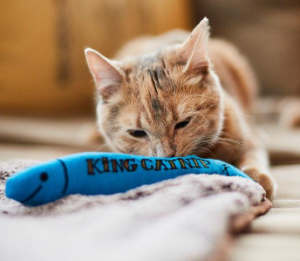Exploring effective strategies to prevent your feline friend from leaping onto kitchen counters and other unwanted surfaces can be both surprising and explosive, much like the sudden burst of a firework. It’s about understanding the whys and hows, and then applying the right techniques to create a harmonious living space for you and your cat.
Have you ever wondered why your cat seems so intent on reaching the highest point in the room? It’s not just to test your patience, but rather a natural instinct related to their need for safety and observation. Now, the real question is, how do we channel this instinct away from our countertops? The answer lies in a combination of training techniques, environmental deterrents, and a healthy dose of consistency and patience. Let’s dive in and discover how to keep those paws on the floor!
Understanding Your Cat’s Behavior

It’s also important to consider that cats love routine and can develop habits quickly. If your cat has learned that jumping on the counter yields attention or food, they’ll likely repeat the behavior. Positive reinforcement is key—instead of scolding, guide your cat to a desirable spot and reward them for staying off the counter. With patience and understanding, you can redirect your cat’s behavior and maintain a happy, harmonious home.
Training Techniques to Discourage Jumping

Firstly, it’s crucial to understand that scolding or punishing your cat after the fact won’t work; cats simply don’t understand this type of discipline. Instead, focus on positive reinforcement. When your cat jumps onto the counter, calmly place them back on the floor and reward them with a treat or affection when they remain grounded. This teaches them that staying off the counter leads to good things!
Another technique involves making the counters less appealing. You can do this by:
- Using double-sided tape or aluminum foil on the edges of the counter, as cats dislike the sticky or noisy surfaces.
- Placing scent deterrents like citrus peels or commercial sprays that are safe for cats but have a smell they tend to avoid.
- Providing alternative high places for your cat to perch, like cat trees or shelves, so they don’t feel the need to jump up onto the counters.
Remember, it’s all about creating a consistent and rewarding environment for your cat. With time and patience, your feline friend will learn that the floor has just as much to offer as those lofty counter tops.
Environmental Deterrents and Alternatives

Let’s dive into a few ingenious solutions that can help:
- Double-sided tape: Cats detest the feeling of stickiness on their paws. Placing double-sided tape on the edges of your counters can be a powerful deterrent.
- Aluminum foil: The sound and sensation of aluminum foil under their paws can be off-putting for many felines.
- Scat mats: These mats give a harmless static pulse when touched, making the counter a no-go zone for your cat.
- Citrus-scented cleaners: Use these to clean your counters. Cats usually avoid citrus smells, making this an effective repellent.
But it’s not just about keeping them off; it’s also about providing alternatives. Cats love high vantage points, so why not give them a better option? A tall cat tree or dedicated shelves can be far more appealing than a kitchen counter. Remember, it’s about creating an environment where both you and your cat can coexist happily and harmoniously. With a sprinkle of creativity and a dash of patience, your cat will soon be hopping onto more appropriate perches!
Maintaining Consistency and Patience
Consistency is the golden rule when it comes to modifying your cat’s behavior. Just like learning a new language or mastering an instrument, teaching your cat to stay off the counters requires regular practice and reinforcement. You might be wondering, “How long will it take for my cat to learn?” The truth is, it varies with each feline friend, but what’s crucial is your unwavering commitment to the training process.
Patience, on the other hand, is your best ally. It’s easy to feel a burst of frustration when you find your kitty perched atop the kitchen counter for the umpteenth time. However, remember that scolding or punishing your cat can lead to fear and stress, which can actually exacerbate the counter-jumping behavior. Instead, take a deep breath and use positive reinforcement. Reward your cat for good behavior with treats or affection, and you’ll slowly but surely see progress. Here’s a quick list to help you stay on track:
- Set up a consistent training schedule.
- Use the same commands and rewards to avoid confusion.
- Be patient – behavioral changes take time.
- Celebrate small victories along the way.
